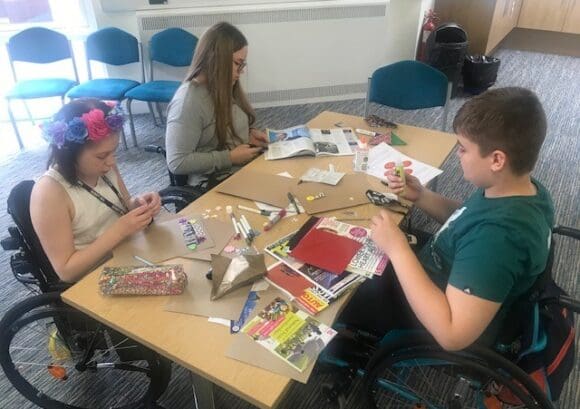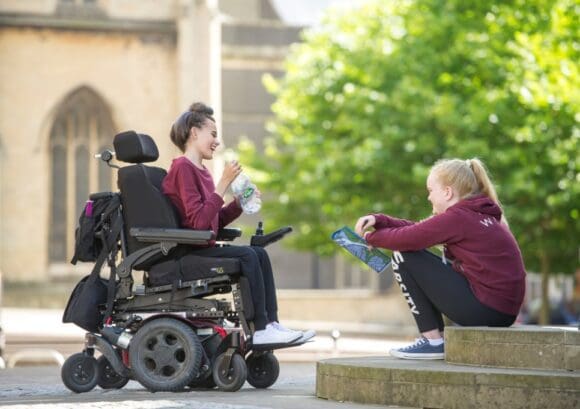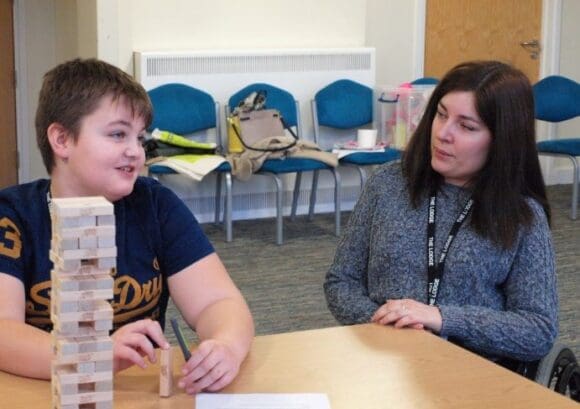Returning to Education after Injury
It may seem daunting for a school or education provider to consider how to include a child or young person with a spinal cord injury. However it is important to remember that with the right support, many children and young people with spinal cord injury do have a positive education experience, other schools have done it and there are support networks, information and many resources available that can help.
Knowing what to expect
Remember that every child and young person with a spinal cord injury is unique and will have individual specific requirements and needs. Involving the child or young person, their family and the health teams working with them from the outset will help make sure you understand and learn how to meet these individual requirements. While many of the requirements will be related to the physical and medical impact of having a spinal cord injury, schools also need to consider the impact on the student’s academic and social life as well as emotional mental health and wellbeing.
If the process feels difficult or daunting, contact the local authority to find out what support is offered. Most local authorities will have Advisory Support Teachers, who help schools prepare for and include students with various specific needs – including making adaptations, using assistive technology, training staff, using Teaching Assistants, and ensuring inclusive policies and practices. Additionally, your school will have put other inclusion policies or practices in place and these can often be transferred or adapted
Learning about the child or young person’s specific requirements
” My school was really good. They were eager to get me back. The teachers were understanding about everything, for example if I wasn’t well or couldn’t go in or if I had a hospital or doctor’s appointment. They understood that it was not going to be the same as before. They gave me extra time to do things. My advice to schools would be don’t act differently because the young person is in a chair because they are exactly the same person, apart from going from walking to sitting. That was what I didn’t like – the teachers were constantly asking if I was OK.”
Danielle, 17
One of the most important things to do is to collect accurate and useful information about what the child needs in order to be included in school. This could involve:
· the child or young person’s specific medical requirements and subsequent implications on their life at school (e.g. mobility, bowel and bladder management)
· any medical issues that may arise at school or what ongoing medical treatment schools may need to accommodate (e.g. physiotherapy)
· any changes to the way the child communicates or learns (e.g. if they become primarily an auditory learner)
· considerations on how the child can be re-integrated socially into the school community
· transport requirements
· what equipment or technology the child or young person may need
· guidance on providing any necessary mental health support.
Remember that the child may have or may be experiencing Post-Traumatic Stress and that families and siblings will often also be going through a difficult time.
“In a school setting, it is very important for teachers to understand the needs and abilities of individual students with spinal cord injuries, and not to assume that all spinal cord injuries will be the same, or that students will have the same sensation and movement control. It is helpful to learn about individual students and ask what support and assistance they need. It is also important to be sensitive to issues such as bladder and bowel management and the need for assistance with activities”
Dr. Angela Gall, Consultant London Spinal Cord Injury Centre, Stanmore
This information can begin to be gathered from the child’s health team at the spinal cord injury centre or general hospital. Schools should have contact with a spinal cord injury centre or a general hospital while the student is in hospital. Before discharge, most spinal cord injury centres and hospitals will contact the school and arrange meetings to discuss the child or young person’s requirements – including access, medical, emotional and learning needs. Often, an occupational therapist will visit the school – sometimes with the student – to discuss necessary physical adaptations or required equipment.
Schools should also be invited to the child or young person’s ‘Discharge Planning Meeting’ when they are discharged from hospital, during which a report will be given on the medical issues. Additionally, health professionals such as a case manager or liaison nurse will go to schools and provide health education to whoever will be the responsible person at school – possibly a school nurse, SENCO or the head teacher. Depending on the child’s requirements, other health care professionals such as a community physiotherapist may also become involved in the school.
How a school uses the information about a child’s specific requirements depends on the situation. There should be a structure and procedure for providing and reviewing support such as an Education Health Care Plan. An Education Health Care Plan should be developed with the child and family alongside education and health professionals. This plan will detail how to meet the child or young person’s academic, social, personal, medical and emotional needs. You can find out more about Education Health Care Plan’s in the ‘Frequently Asked Questions’ section of this toolkit.
“Schools can promote inclusion by getting good advice from spinal centres and hospitals about access and the management of the spinal cord injury. Questions such as “Is this the right place for them?” “What if there is a medical concern during the school day?” “How can we fit in standing regimes?” need to be considered in context, with accurate and up-to-date information.”
Zoe Chevalier, Clinical Psychologist, Stoke Mandeville
GO BACK




